Colin Hanley
Causality Learning With Wasserstein Generative Adversarial Networks
Jun 03, 2022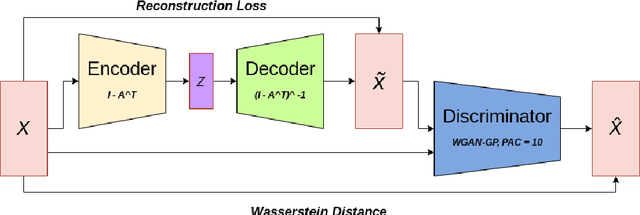
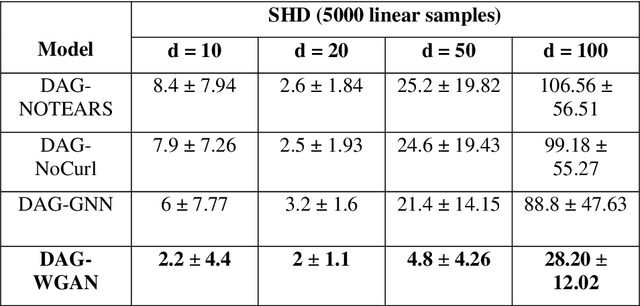
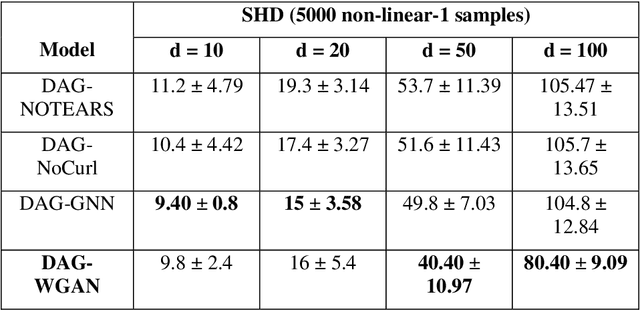

Abstract:Conventional methods for causal structure learning from data face significant challenges due to combinatorial search space. Recently, the problem has been formulated into a continuous optimization framework with an acyclicity constraint to learn Directed Acyclic Graphs (DAGs). Such a framework allows the utilization of deep generative models for causal structure learning to better capture the relations between data sample distributions and DAGs. However, so far no study has experimented with the use of Wasserstein distance in the context of causal structure learning. Our model named DAG-WGAN combines the Wasserstein-based adversarial loss with an acyclicity constraint in an auto-encoder architecture. It simultaneously learns causal structures while improving its data generation capability. We compare the performance of DAG-WGAN with other models that do not involve the Wasserstein metric in order to identify its contribution to causal structure learning. Our model performs better with high cardinality data according to our experiments.
DAG-WGAN: Causal Structure Learning With Wasserstein Generative Adversarial Networks
Apr 01, 2022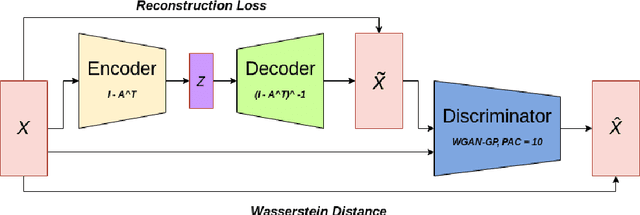
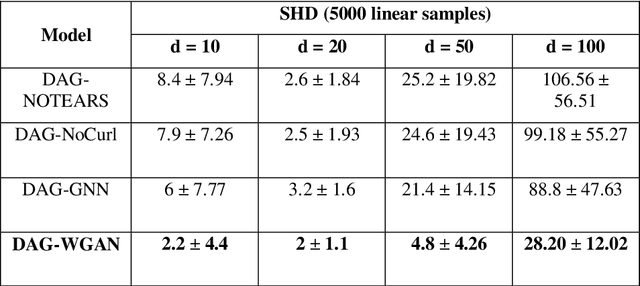
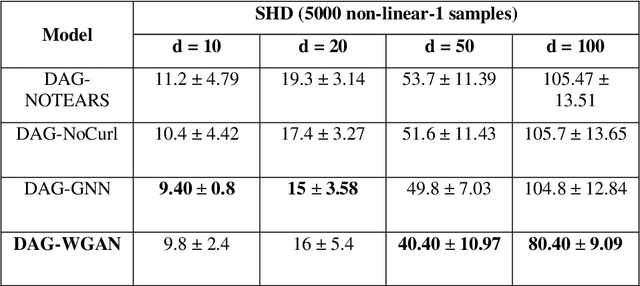
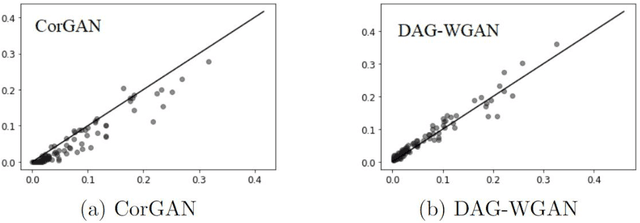
Abstract:The combinatorial search space presents a significant challenge to learning causality from data. Recently, the problem has been formulated into a continuous optimization framework with an acyclicity constraint, allowing for the exploration of deep generative models to better capture data sample distributions and support the discovery of Directed Acyclic Graphs (DAGs) that faithfully represent the underlying data distribution. However, so far no study has investigated the use of Wasserstein distance for causal structure learning via generative models. This paper proposes a new model named DAG-WGAN, which combines the Wasserstein-based adversarial loss, an auto-encoder architecture together with an acyclicity constraint. DAG-WGAN simultaneously learns causal structures and improves its data generation capability by leveraging the strength from the Wasserstein distance metric. Compared with other models, it scales well and handles both continuous and discrete data. Our experiments have evaluated DAG-WGAN against the state-of-the-art and demonstrated its good performance.
 Add to Chrome
Add to Chrome Add to Firefox
Add to Firefox Add to Edge
Add to Edge